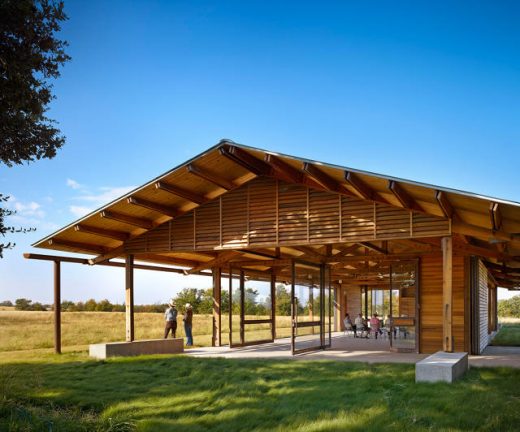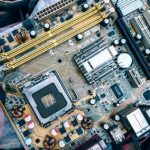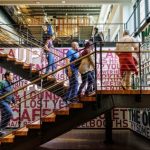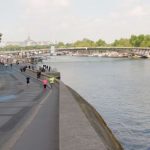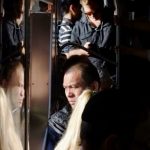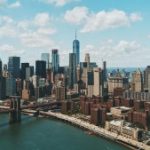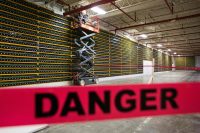These Are The 10 Best New Sustainable Buildings In The World
Every year, the American Institute of Architects Committee on the Environment scours the country for the best new green buildings—which, as they point out in a new report, can be built for the same amount or even less than standard architecture. They just happen to be much better at saving energy and water—and nicer to work inside, thanks to better light, materials, and cleaner air. Here are the 10 that won this year.

Biosciences Research Building (BRB), Galway, Ireland
Payette and Reddy Architecture + Urbanism
Research labs running high-intensity equipment usually use a lot of energy, both for machines and for heating and cooling. But a new research center in Ireland—a country with a moderate climate—almost never has to turn on the heat or A/C. The labs are in the center of the building, with offices and writing desks around the edge, where it’s possible to open the windows instead of using mechanical ventilation. The corridors around the perimeter act like a “thermal sweater” for the interior, while heat from the highest-energy labs is redirected to help keep nearby writing desks warm on cold days.
Center for Sustainable Landscapes (CSL), Pittsburgh
The Design Alliance Architects
When architects designed the new home for this nonprofit, they were aiming to make the greenest building in the world. The center, built on a brownfield in Pittsburgh, runs completely on renewable energy; in 2015, it produced more solar and wind power than it used. It’s also “net-zero water”—all of the wastewater produced on site is cleaned and filtered with plants, and reused to flush toilets. Rain is captured in a 60,000-gallon rain tank. Most of the time, there’s enough daylight that no one has to turn on the lights; everyone has a view of nature outside, where the center runs a public garden.
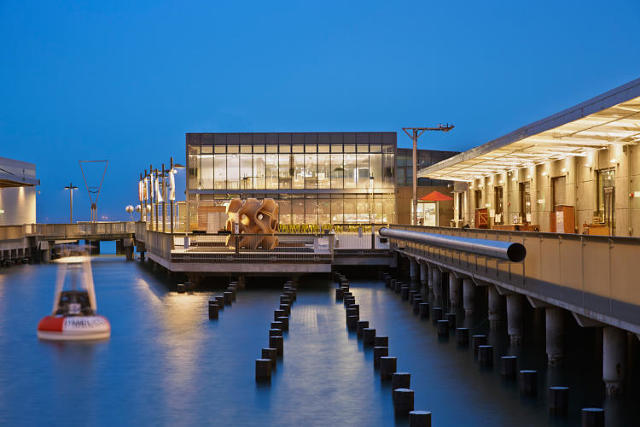
Exploratorium at Pier 15, San Francisco
EHDD
When San Francisco’s Exploratorium moved to its new space in the city’s downtown, it decided not to include any parking for the million visitors it gets every year. Sitting on a pier, the building is able to use the San Francisco Bay for heating and cooling—the water flows into a heat exchanger. The museum uses less than half the energy of comparable buildings, and the roof is covered in solar panels to help power exhibits. Monitors display energy use in real time, so staff can continuously tweak operations to improve performance. This year, the building expects to meet its goal of net-zero energy use.
HEB at Mueller, Austin
Lake|Flato Architects, H-E-B Design + Construction, Selser Schaefer Architects
While the typical supermarket uses more energy per square foot than any other type of commercial building, this new store in Austin uses 64% less than the average grocery. Solar panels power the store’s lights. Seasonal temperature and humidity sensors connect the store to conditions outside—so people aren’t freezing next to refrigerators in the summertime, and the whole store can save energy. The store is the first in the country to use fridges that run on propane, using 95% less refrigerant than usual.
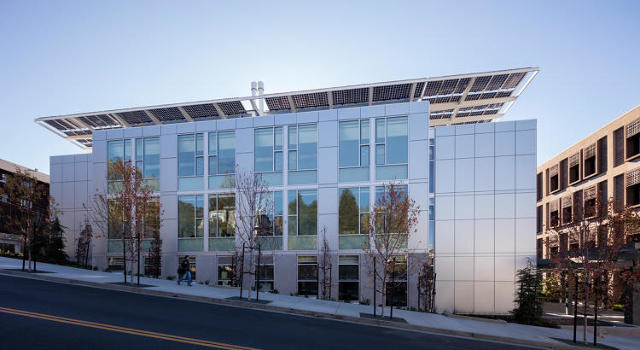
Jacobs Institute for Design Innovation, Berkeley, Calif.
Leddy Maytum Stacy Architects
A new center focused on sustainable urban design at the University of California-Berkeley, under construction on a former volleyball court, squeezes design studios, project rooms, and maker spaces into a tiny site. The center reuses hot and cold water from the next-door building for heating and cooling, and solar panels on the roof cover more than half of the building’s energy needs. Outside, a high-performance façade shades the building and keeps it cool.
Rene Cazenave Apartments, San Francisco
Leddy Maytum Stacy Architects and Saida + Sullivan Design Partners, Associated Architect
A parking lot and freeway off-ramp in San Francisco are turning into affordable mini-studio apartments for former chronically homeless people. Despite a small budget, the architects squeezed in several sustainable features. The building uses filtered fresh air instead of air conditioning, thanks to the city’s mild climate. Solar hot water panels help provide hot water, while solar panels on the roof help power apartments. The design will lead residents past a passageway filled with support staff every time they walk to their apartments.
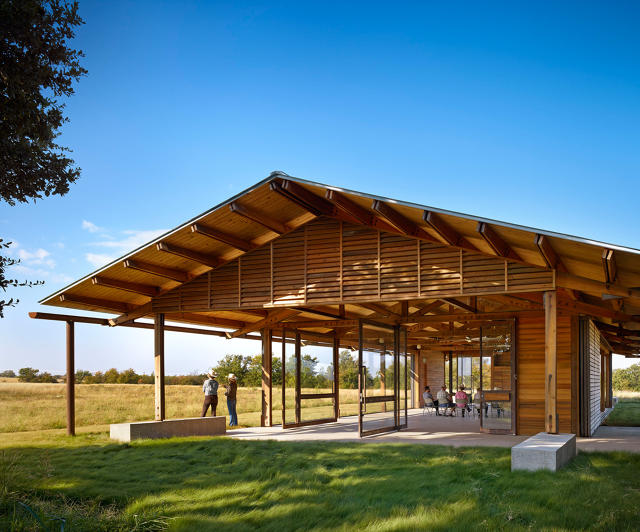
The Dixon Water Foundation Josey Pavilion, Decatur, Texas
Lake|Flato Architects
This beautiful building, designed for an educational center that shows how livestock can help restore prairies and watersheds, has walls that fold and unfold based on the weather each day. It uses no mechanical heating or cooling, and its solar panels produce more power than it uses. Rainwater is collected from the roof, and a constructed wetland, instead of a septic system, cleans and filters all of the water used in the building. The structure uses local, low-carbon materials like pine.
The J. Craig Venter Institute, San Diego
ZGF Architects LLP
At this net-zero energy genomics lab, a huge solar array on the roof produces more energy than the building uses. A thermal energy storage system helps heat and cool the building with little outside energy. Tanks store rainwater, using it to flush toilets and in a cooling tower. In the future, the building will connect to city pipes for reclaimed water. Plus, the workspaces have views of an ecological reserve and the ocean.
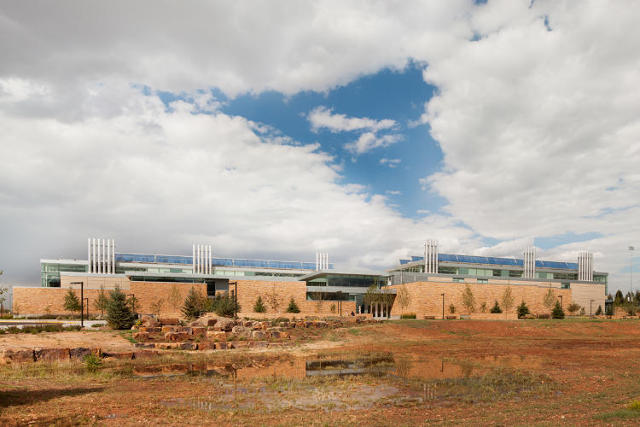
University of Wyoming—Visual Arts Facility, Laramie, Wyoming
Hacker Architects and Malone Belton Able PC
Since working in art studios often means dealing with toxic materials, this university art building uses natural ventilation and Wyoming’s seasonal winds—along with 15 other ventilation types—to keep the air fresh. Sediment traps on studio sinks keep paint and other chemicals out of wastewater. Automatic daylight sensors keep the lights off when possible. The building, like others on campus, is made from stone quarried nearby.
West Branch of the Berkeley Public Library, Berkeley, Calif.
Harley Ellis Devereaux
This is the first public library in California to be certified as a Living Building Challenge net-zero energy building. A wind chimney provides fresh air without bringing in noise from the busy street outside. Solar panels provide energy, and solar thermal panels help provide radiant heating, cooling, and hot water. Windows keep the space naturally lit for reading.
Center for Sustainable Landscapes
” src=”http://c.fastcompany.net/multisite_files/fastcompany/imagecache/slideshow_large/slideshow/2016/04/3059363-slide-2-center-for-sustainable-landscapes.jpg”>
HEB at Mueller
” src=”http://c.fastcompany.net/multisite_files/fastcompany/imagecache/slideshow_large/slideshow/2016/04/3059363-slide-4-h-e-b-at-mueller.jpg”>
Rene Cazenave Apartments
” src=”http://a.fastcompany.net/multisite_files/fastcompany/imagecache/slideshow_large/slideshow/2016/04/3059363-slide-6-rene-cazenave-apartments.jpg”>
The J. Craig Venter Institute
” src=”http://a.fastcompany.net/multisite_files/fastcompany/imagecache/slideshow_large/slideshow/2016/04/3059363-slide-8-the-j-craig-venter-institute.jpg”>
West Berkeley Public Library
” src=”http://c.fastcompany.net/multisite_files/fastcompany/imagecache/slideshow_large/slideshow/2016/04/3059363-slide-10-west-berkeley-public-library.jpg”>
Fast Company , Read Full Story
(51)

